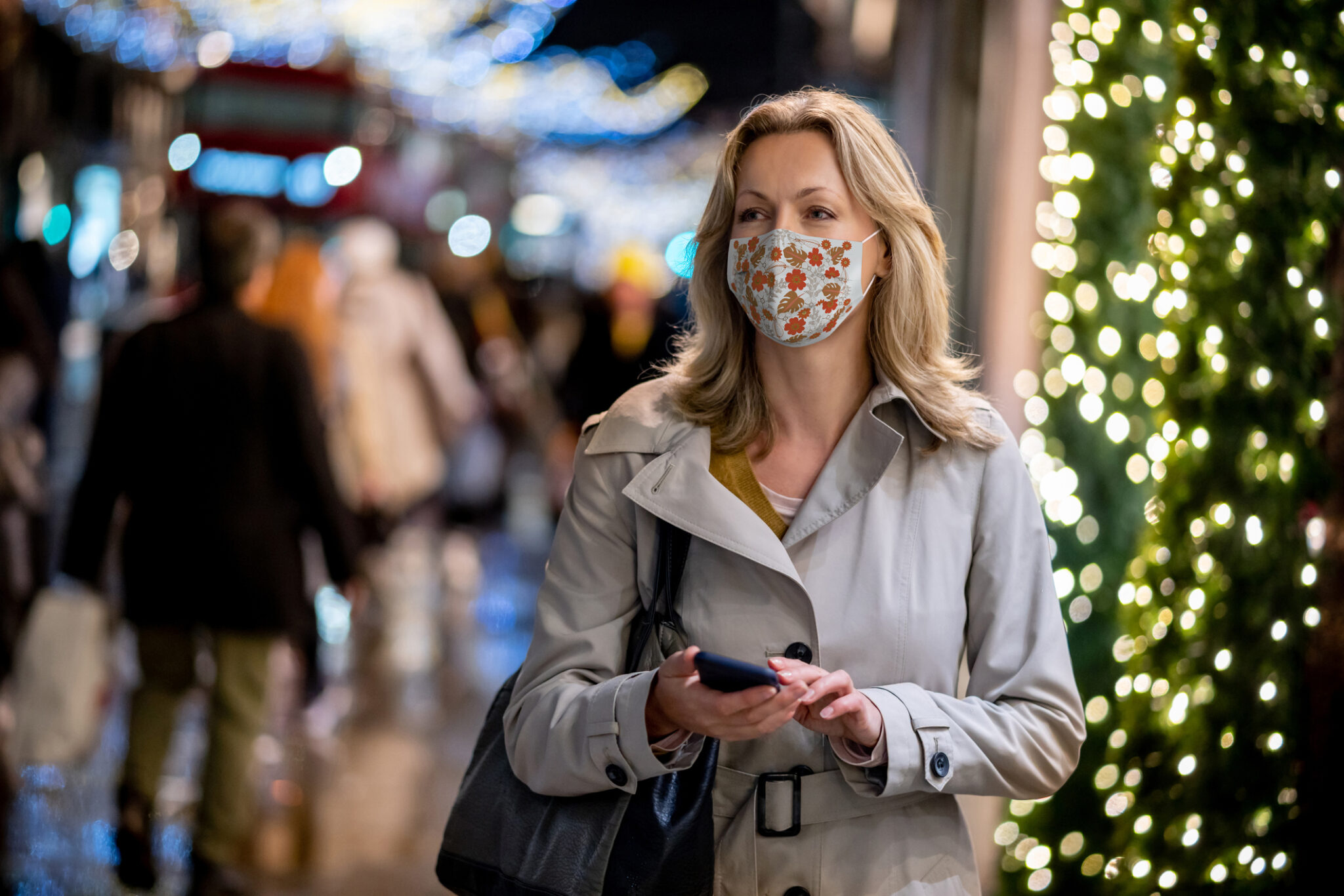COVID-19 has altered the manner in which consumers shop, from online purchasing to contactless delivery to in-store health and safety measures to the demand for value. According to Periscope by McKinsey’s new report, “2020 Holiday Season: Navigating Shopper Behaviors in the Pandemic,” such trends—and other new ones—will continue on through the holiday shopping season. Following are new behaviors shoppers will exhibit during the holidays, according to the report, and insights from McKinsey executives on how retail marketers can set up for a successful season.
Deal Day Spending
Many U.S. consumers have experienced economic hardship due to the pandemic. According to the report, 27 percent of U.S. shoppers surveyed indicated a slight or significant income reduction this year. But 73 percent will spend the same or more during blockbuster holiday events, like Black Friday, Amazon Prime Day and Cyber Monday. Overall, ecommerce holiday sales will grow by at least 19 percent.
Channels for Research
However, in terms of the channels consumers will use to research purchases, 43 percent of U.S. consumers surveyed said they will still browse in stores. The top channel for research was retailer websites (54 percent), with brand websites at 37 percent, catalog browsing at 31 percent, social media at 28 percent, TV commercials at 21 percent and personalized campaigns at 18 percent.
Brand Loyalty Challenged
Brand loyalty is proving to be more vulnerable this year, as consumers have tended to try new products and brands during the pandemic. McKinsey research shows that more than 60 percent of global consumers have tried a new shopping behavior since March, and 40 percent have shopped at a new retailer. When looking at the holiday shopping season specifically, just 11 percent of U.S. consumers will shop from the same retailers as they did last year.
Health and Safety
For those U.S. consumers intending to browse in-store, health and safety measures are top of mind. The most important measures are masks and barriers (40 percent), cleaning and sanitizing supplies (18 percent), one-way store aisles and special hours (13 percent), physical distancing (12 percent) and health checks upon entry (11 percent).
Early Shopping
In the face of limited availability, shipping delays and curbside pickup trends experienced in the spring, many U.S. shoppers are intending to make purchases earlier than last year, with 42 percent of U.S. consumers getting started in October or earlier.
Setting up for Success
The reports suggests that there are four ways in which retail marketers can respond to the above trends and meet new consumer demands. First, motivate shoppers to buy early by creating early Black Friday events and sending consumers personalized communications to inspire purchases. Second, offer a higher level of convenience by providing multiple options to fulfill orders, from traditional home delivery to online to curbside. Offer digital support for growing ecommerce operations through enhancing digital storefronts and prioritizing the customer experience with online support, live chat and warehouse fulfillment. Finally, use consumer data to personalize and enhance the browsing experience online with product information, reviews and shopper preferences.
—
Following is a conversation about the report with Brian Ruwadi, Global Leader, Periscope by McKinsey and Senior Partner, McKinsey & Company, and Tamara Charm, Senior Expert, McKinsey & Company.
Chief Marketer: Was anything surprising to you about the trends outlined in the report?
Brian Ruwadi: There are a handful of things that are certainly different than they were in the past. The first is—and we saw this with our retail re-imagined COVID research—that consumers have tried a bunch of new CPG brands and also retail brands. We continue to see in our holiday research that folks are much less loyal than they were in the past to particular brands and plan to be through the holidays. One major theme here is how do retailers re-achieve this loyalty, and for consumers that have tried them for the first time or second time, how do they lock them in?
The second is this notion of retailers and consumers being worried about ensuring availability and trying to spread the consumer demand out through longer holiday events, Black Friday, et cetera, which appear to be even more important this year as consumers move to value. That has a two-point side to it. One is from an operational standpoint. If they’re going to move more product online before over the holiday season, how do they smooth out demand? And then, how do they work with their marketing partners to make sure they’re getting the demand from the consumer and getting it early?
Tamara Charm: I’m looking back to the start of COVID and what happened in terms of the digital surge, the shock to loyalty and the shift to value in essentials. We’re going to see the same thing play out in the holiday season. One note on the shock to loyalty: All folks’ routines have been disrupted and they are looking at online shopping more and to spend less and differently on value events. There’s going to be more and more of their spend up for grabs, and those who can give consumers what they want, when they want it and how they want it will win.
Chief Marketer: Following up on that, because brand loyalty is a clear issue, do you have suggestions on how marketers can either win back consumers or keep them as customers during this time?
Brian Ruwadi: Three thoughts are critical right now. First and foremost is personalization, particularly churn analytics, to understand who’s tried you for the first or second time and who has left you, and making sure you’re capitalizing on the new customers but also reaching out and pulling back in the customers that have left you and wandered to other brands over time. Second, we’ve seen a big rise in the importance of the omni-channel experience. The folks that have started with great omni-channel experiences or have invested heavily in building that experience are better set up for success and should be focused there.
The third is we’re seeing a big focus on the efficiency of the shopping experience. So, if you’re a consumer worried about COVID, you wouldn’t be able to get into the store, find what you need and get out quickly. Marketers should be thinking about how they create that in-store experience that allows them and the consumer to get in and out efficiently.
Tamara Charm: Folks are telling us that they’re not going to travel as much this holiday season and spend time with a smaller group of folks. So, what they want is likely to change. [It’s about] understanding what that will be, offering the right product to the right folks, upping the communication with them and being able to connect with consumers in all sorts of ways—not only in the store, but catalogs and social media.
Chief Marketer: It’s evident in the report that big deal shopping days are going to be more significant for consumers this year. Do you have any thoughts on how brands can balance those deal days with other avenues to purchase, such as in-store, in order to remain profitable?
Brian Ruwadi: The trick of all of this is going to be how you build a basket in an omni-channel environment. When you’re in the store, marketers and retailers know how to get people to buy. Not just the Black Friday sales, but also the rest of the basket and build it out to be something that’s actually meaningful and profitable. The ones that are going to win over the holiday season are the folks that are able to replicate to some degree that basket-building experience in the omni-channel and online shopping environment.
Tamara Charm: The other important thing to think about is that the big holiday events will no longer be one day. We’ve seen that Black Friday is expanding across many retailers and we know that consumers are looking to shop earlier. [It’s about] bringing the feeling of excitement and value into multiple mini-events, or something that’s connected over the course of November, so that consumers can participate without waiting for that one day.
Chief Marketer: In light of the pandemic lockdowns that vary by each region, how do you suggest marketers approach the constantly shifting situation?
Tamara Charm: One of the things that’s becoming more and more important is getting granular data—not only on what’s happening with your consumer, but what’s happening with infection rates and what’s happening with general shopping and out-of-home activity. Being able to understand that data and be agile and change quickly is increasingly a hallmark of those who are able to succeed in this environment.
Brian Ruwadi: To build on that, this notion of becoming radically more agile than we have in the past as retailers is a big deal in this environment where so much is unpredictable. I’ve been impressed with what many retailers have done over the past six or nine months to become more agile. But if you have a region lockdown over the holiday and your inventory is sitting in a store, now need to be able to market that inventory online to consumers or ship it somewhere else to be sold to a consumer. All of those agile capabilities are going to be critical during the holiday season.
Chief Marketer: According to the report, there are four areas that retail marketers should embrace to be successful this season. We talked about personalization. Any tactics that you would suggest when it comes to digital support for consumers?
Brian Ruwadi: The traditional shopping experience in a store over the holidays is browse, look and see, and feel. That gives consumers confidence in what they want to buy, whichever channel they buy it through. There’s a meaningful chunk of consumers who are now trying to do that through a digital experience, but not all retailers had historically invested in being able to test a product online as easily as many would like. When we did our retail re-imagined research, we saw a massive increase in the number of consumers who cared about product descriptions, product reviews, those types of things, so that they could actually feel confident in their purchase.
Tamara Charm: When we ask folks who is going to shift online, we do see Boomers telling us they’re going to shift at the same rate as younger consumers. So, you will likely have a lot of older consumers going online and digital for the holidays who are not used to that experience. Making sure that you are bringing the product to life digitally will be extra important—and the navigation around that, making it simple and easy to find.
Chief Marketer: Does that translate to creating a range of experiences to accommodate multiple generations?
Tamara Charm: The product description and the reviews are places consumers consistently tell us they go and they trust. Increasingly, virtual and augmented reality capabilities will be quite helpful in categories where getting a sense of the dimension of the product and the look and feel on you, in the case of apparel or cosmetics, will be increasingly important.
Brian Ruwadi: There’s also a point of understanding the different types of journeys that consumers are taking digitally. Are they there for one product and want to get in and out fast? Are they there and they want to browse? How do we create an experience, digitally, that allows them to have the in-store browsing experience online? Those are two very different journeys and require different types of capabilities online, or apps, or whatever it might be.






